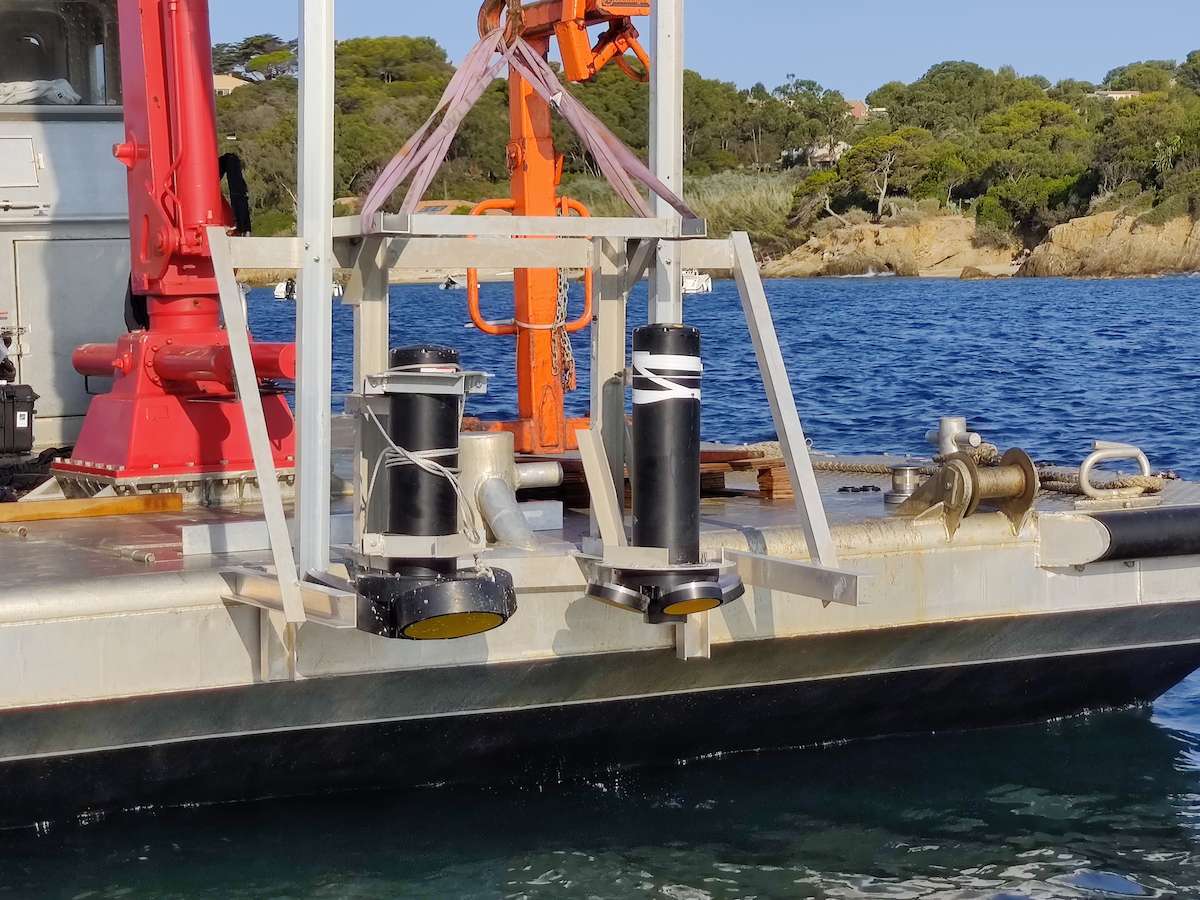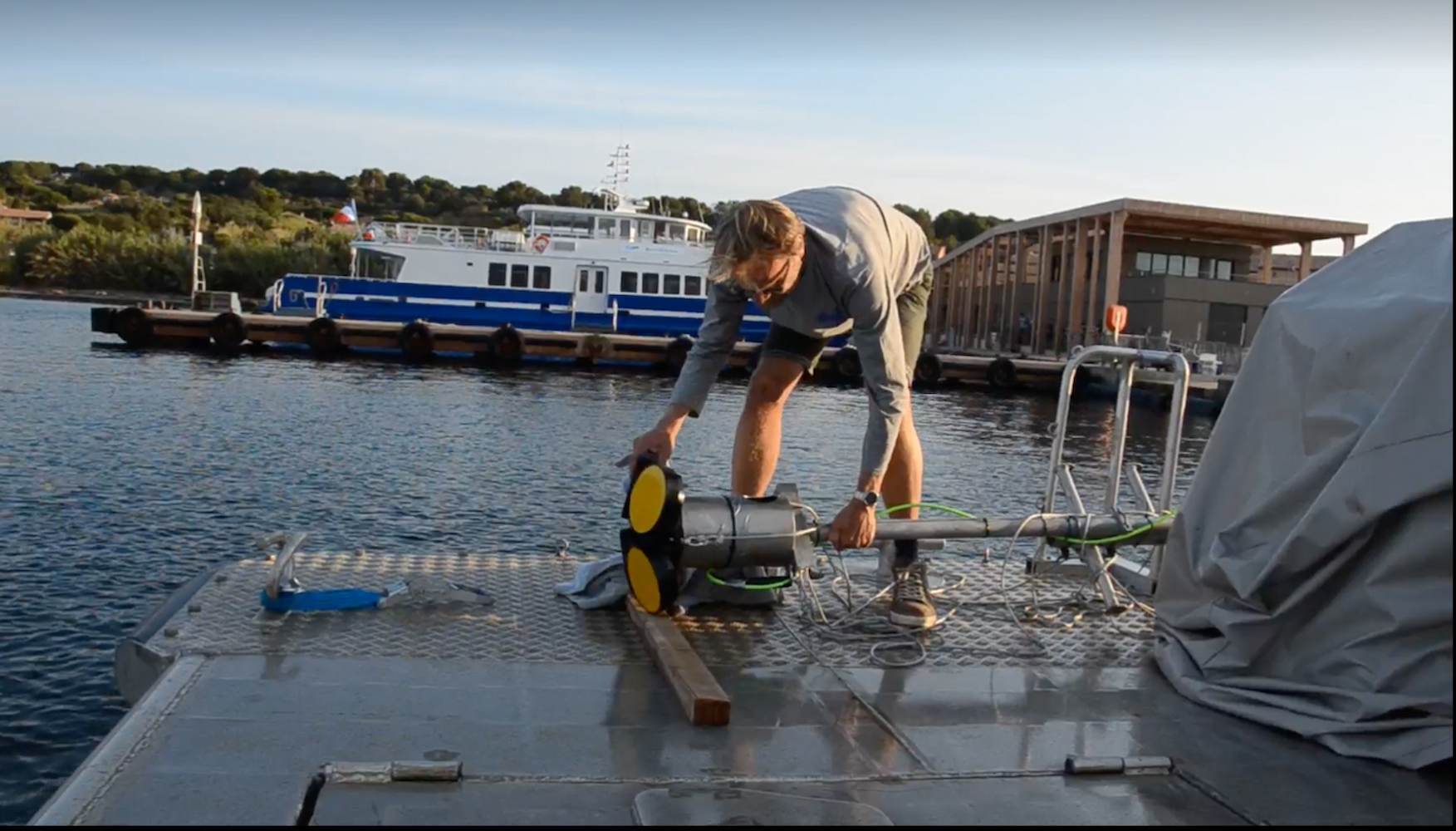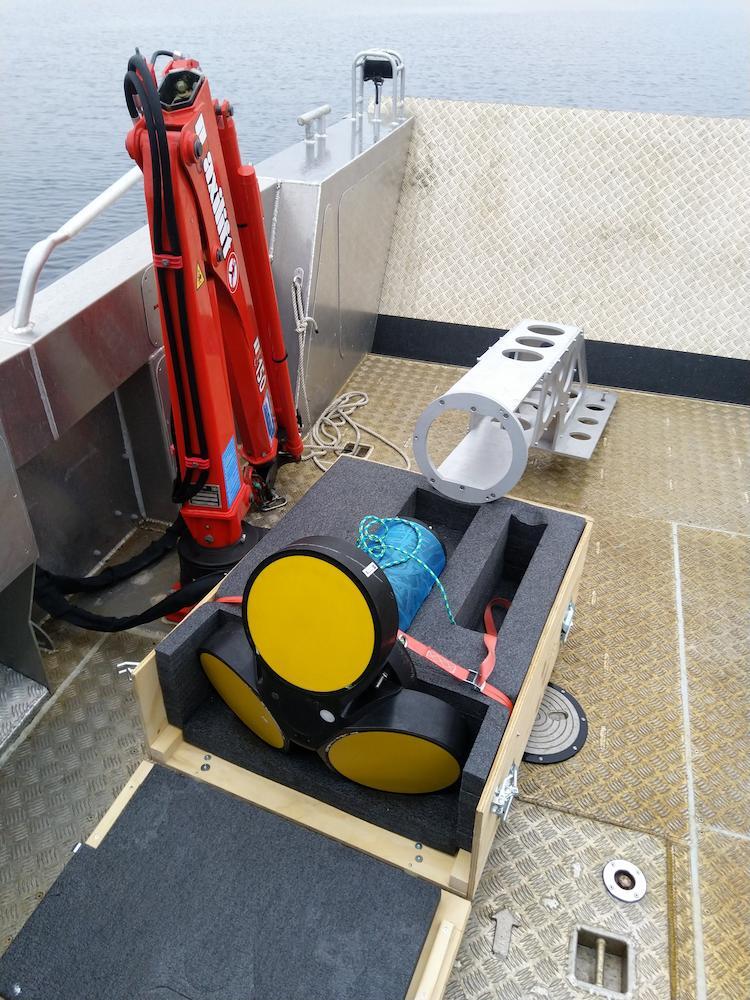
Dual-frequency, long-range vessel-mounted ADCP gives operators more flexibility
Nortek’s 55 kHz version brings the option of multiple ranges and corresponding resolutions in one instrument to its vessel-mounted Signature series of acoustic Doppler current profilers (ADCPs). It also features a highly user-friendly interface that allows a broader cross-section of users to carry out long-range profiling.
The 55 kHz variant comes as an addition to the 100 kHz alternative in Nortek’s Signature VM Ocean series, which is ideal for vessel-mounted current profiling at greater depths. This complements the 1000, 500 and 250 kHz vessel-mounted current profiling options in the Signature VM Coastal product series, which are tailor-made for shorter-range profiling at lower depths, closer to the coastal shore.
Unique flexibility with new, dual 55 kHz or 75 kHz long-range profiling mode
By using the Signature55 ADCP as the main tool in this vessel-mounted solution, users can benefit from great versatility. The Signature55 ADCP can be operated in either a 55 kHz or 75 kHz mode, and this brings added benefits. This unique flexibility means that just one instrumentation package can deliver higher-resolution data at shorter ranges in the upper boundary layer (75 kHz), or it can extend out to 1000 m for those prioritizing range over resolution (55 kHz).
The instrument’s piston transducers enable high single-ping precision, which is optimal on moving vessels. Higher precision means there is less need to average out velocity data, allowing usable data to be produced more rapidly.

Early testing of the 55 kHz frequency addition to the Signature VM range, which took place in the Oslofjord during winter. Our skipper and test engineer texts his co-workers about the positive proceedings, running the Signature VM acquisition software on the computer screen in the background.
A vessel-mounted ADCP with user-friendly setup and control system that is proven and reliable
A major innovation is the user-friendly setup and control system, based on Nortek’s Signature VM data acquisition and review software package. A higher degree of task automation and easy-to-understand interfaces enable the 55 kHz version of the Signature VM to be operated by users with a greater range of experience levels than possible with other long-range vessel-mounted ADCPs.
Making long-range profiling accessible for a wider audience
Long-range profilers have traditionally been the domain of the mission’s physical oceanographer – often the only person on board with the knowledge to verify data reliability and accuracy. The low frequency and long acoustic travel times involved, together with the impact of vessel movement and vessel noise, make collecting optimal data a challenge, requiring a continuous trade-off between data quality, range and vertical velocity resolution.
A lack of the skills and training required to juggle these factors using cumbersome software has effectively prevented other potential users, such as biologists, students, the ship’s crew or offshore operators, from using long-range instruments. So, if something goes wrong or settings need to be adjusted, it is the team oceanographer that must sort it out – and if they are busy, or one does not exist, then profiling activities may have to be halted, with a resulting loss of valuable time and data.
With this update to the Signature VM series, Nortek has removed that bottleneck by making long-range ADCP operation much more straightforward, bringing it within reach of the whole community. For example, a biologist researching the upper boundary zone should easily be able to direct the instrument and process incoming data to get what they need from it.

Nortek staff preparing the deployment of Nortek’s 100 kHz Signature VM ADCP in the French Mediterranean.
Good news both for the physical oceanographer and less specialized users
“Today’s Signature VM software lets you quickly configure the instrument optimally and display the data using easy-to-interpret graphics,” says Herman Huitema, a Business Development Manager for vessel-mounted solutions at Nortek.
“The review post-processing software reduces the verification time and allows you to create automated overview files, processed daily, during the cruise. It also allows basic validation and exporting of data in text and graphical formats, or in software such as MATLAB, for those who need more,” he adds.
That’s good news both for the physical oceanographer, who can spend more time on their research than with the instrument, and for other users seeking more range, high vertical resolution, or simply the addition of current measurements to their work.
Want to learn more about the 55 kHz option? Visit our Signature VM product page.

The 55 kHz Signature VM ready for its first deployment on the Nortek test vessel using an over-the-side frame. The Signature VM series is available with swappable short or long housings or external battery canisters, and these can be used in moorings or on vessel-mounted units.